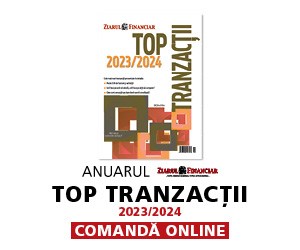Raiffeisen Bank, the third largest player in the system in terms of value of assets, posted a net profit worth 314.5 million RON (equivalent to 94.2 million euros) last year, up 68% in RON against 2006 results. Expressed in euros, the increase stood at 78%.
Gross profit saw a faster increase, by 80%, to 387.7 million RON (slightly above 116 million euros). The slower increase of the net profit had to do with the higher comparison base, given that the bank did not pay income tax until 2006, having losses to recover from the previous years. In the overall banking system, profit climbed 25% last year, to 2.75 billion RON (826 million euros).
"Our strategy, of concentrating on high-quality assets and on taking our relationship with clients further than just granting a credit, worked," said Steven van Groningen, Raiffeisen Bank's president.
Last year, the bank's profit accounted for a little over 11% of the net profit recorded in the overall banking system, while in terms of assets, Raiffeisen's market share fell to 6.8% from 8% in December 2006. The reduction in the market share came amid a merely 7% increase in the bank's assets last year, to 4.4 billion euros, while the market grew 36% (in euros), to 70 billion euros.
However, Van Groningen says Raiffeisen has shares of close to 11% on some market segments considered to be important, such as domestic payments and payments through the SWIFT system.
The bank's main shareholder, Austrian financial group Raiffeisen International, reported credits worth 5.6 billion euros in Romania, 19% more than in December 2006. The 1.2 billion-euro difference is accounted for by funding outsourced by the local branch. Van Groningen explained that Raiffeisen mainly outsourced large credits granted to corporate clients, but also retail credit packages. On the other hand, he says the bank saw a slower increase due to the rather conservative risk policies.
"We did not grant more credits because we did not want to. This would have meant either accepting smaller prices or taking on bigger risks than our strategy provides for," added Raiffeisen's president.
Pentru alte știri, analize, articole și informații din business în timp real urmărește Ziarul Financiar pe WhatsApp Channels











































